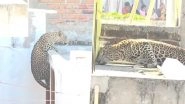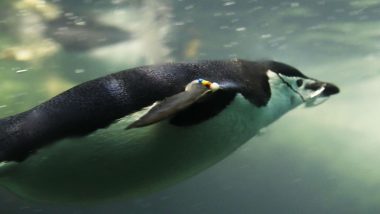Buenos Aires, March 14: Argentine researchers have announced the discovery of fossilized skin on the remains of the wing of a 43-million-year-old penguin on Marambio Island in the Antarctic.
The fossil was actually discovered during a research mission in 2014. The fossil was then studied at the La Plata Museum by Argentine paleontologist Carolina Acosta Hospitaleche, the agency for scientific disclosure at La Matanza National University said on Friday. World's Second Largest Penguin Colony is Disappearing! Emperor Penguins Population Sees Vast Decline.
The fossilized skin belongs to the Palaeeudyptes gunnari, one of the many extinct types of penguins that lived in Antarctica during the Eocene period, which lasted from around 56 to 34 million years ago.
At that time, Antarctica was covered in woodland and boasted a diverse fauna. "The fossilization of the skin of this wing is unique because it's the first conserved example in the world of a penguin with skin," said Acosta Hospitaleche. World Penguin Day 2019: Funny Penguin Bloopers to Dance Offs, These Cute Videos Will Make You Smile.
"The skin was conserved as a fossil on both surfaces of its wing, enveloping the bones that have remained articulated in their original position," she added.
(The above story first appeared on LatestLY on Mar 14, 2020 04:18 PM IST. For more news and updates on politics, world, sports, entertainment and lifestyle, log on to our website latestly.com).













 Quickly
Quickly












